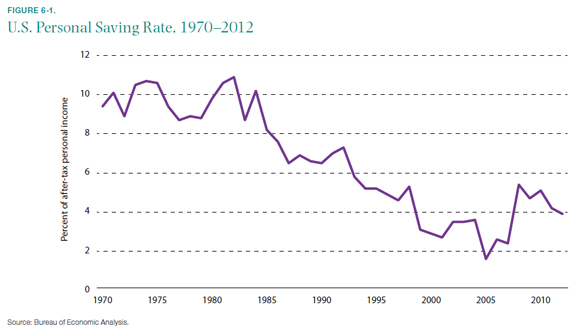Brookings Rethinks...Tax Expenditures
We have been working our way through the "15 Ways to Rethink the Budget" report from the Brookings Institution's Hamilton Project, first covering their defense proposals and reforms to Medicare. In this post, we will examine four papers that take a look at the nation's tax code, particularly the many credits and deductions. These papers offer some good ideas about how to best reform or eliminate many tax expenditures, which will cost the federal government nearly $1.3 trillion in forgone revenues in 2013. Let's examine each paper in turn.
Broad-Based Limits to Tax Expenditures
The first proposal is from Diane Lim of The Pew Charitable Trusts entitled "Limiting Individual Income Tax Expenditures." In this paper, Lim argues that broad based reforms to limit the value of tax expenditures could be nearly as effective and politically easier than eliminating individual tax expenditures in the code.
Lim identifies two categories of ways to reduce income tax expenditures across the board, by either reducing the subsides at the margin or by capping or limiting the total value of tax provisions. Options that could reduce the value of tax provision at the margin include limiting tax deductions to a lower marginal rate, converting deductions into credits, or reducing tax expenditures by a set percentage. Options that could reduce the value of tax expenditures without changing incentive at the margin include capping the total dollar value of deductions, limiting tax provisions to a percentage of income, or phasing down tax expenditures at higher incomes. Lim argues that a comination of changes from the two approaches could be useful to avoid the drawbacks of each. Many of these ideas are similar to ones we discussed last year.
Reforming Savings Incentives
The second proposal comes from Karen Dynan of the Brooking Institution, "Better Ways to Promote Saving through the Tax System," and, as one would imagine, takes a look at many tax expenditures designed to promote saving, costing an estimated $136 billion. However, there is some evidence that some of these tax provisions provide windfalls, promoting retirement savings among those who would have done so anyways. As the chart below shows, personal saving has continued to fall in the U.S., despite these provisions in the tax code.

Source: Dynan (Data from Bureau of Economic Analysis)
With that in mind, Dynam recommend the following changes, which together would save $40 billion in net deficit reduction:
- Capping the rate at which deductions and exclusions related to retirement saving reduce a taxpayer’s income tax liability at 28 percent (Saves $75 billion).
- Taking steps to ensure that more workers are covered by some type of retirement savings plan by increasing the small employer pension startup tax credit and establishing an automatic IRA program (Saves $3 billion-$6 billion).
- Making the Saver’s credit refundable and easier to understand (Costs $30 billion).
- Removing obstacles to firms establishing expanded savings platforms that would allow employees to save for both retirement and non-retirement purposes (Negligible Savings).
Eliminating Fossil Fuel Subsidies
The third paper, "Eliminating Fossil Fuel Subsidies," comes from Joesph Aldy of Harvard University. Aldy argues that the nearly $4 billion of revenue annually forgone in tax provisions for oil and gas companies is no longer justified given the economic rewards and advances in technology. The proposal calls for the elimination of 12 tax provisions that promote oil, gas, and coal production, saving over $41 billion over ten years.

The largest include allowing expensing of intangible drilling costs (like labor and fluid) instead of depreciating them over the life of the well ($13.9 billion), the portion of the domestic production activities deduction that goes to oil and gas ($11.6 billion), and percentage depletion for wells, which allows companies to deduct a percentage of their revenues of a well ($11.5 billion). These subsides, according to Aldy, are doing little to stimulate additional production and should be looked at given our fiscal realities.
Reforming the Mortgage Interest Deduction
The final paper on tax expenditures, "Replacing the Home Mortage Interest Deduction" is authored by Alan Viard of the American Enterprise Institute. As Viard explains, if homes were taxed in the same manner as business capital, imputed rent (the return from owning and occupying a home) would be taxed while mortgage interest payments would be deductible. Our current tax system does not tax imputed rent, but still provides a mortage interest deduction, serving mostly as an inefficient subsidy for more expensive homes.
Viard proposes converting the current mortage interest deduction into a 15 percent refundable credit, a change included in the Domenici-Rivlin tax plan. The credit limited to interest on a $300,000 mortgage (the current limit is $1.1 million) and would not be allowed on second homes. The current deduction would be reduced by 10 percent each year, with an option to switch to the new credit at any time. Overall, this change could result in $300 billion in savings over ten years, a substantial amount of deficit reduction.
We've mentioned frequently on this blog that tax expenditures deserve a thorough look. Not only do they represent a significant amount of forgone revenue, in some cases they may not be fulfilling their policy goals effectively. A simpler, pro-growth tax code could be less economically distortionary and raise revenue without raising tax rates. Our tax code needs to be reformed, and many of the ideas above should be considered in the conversation.